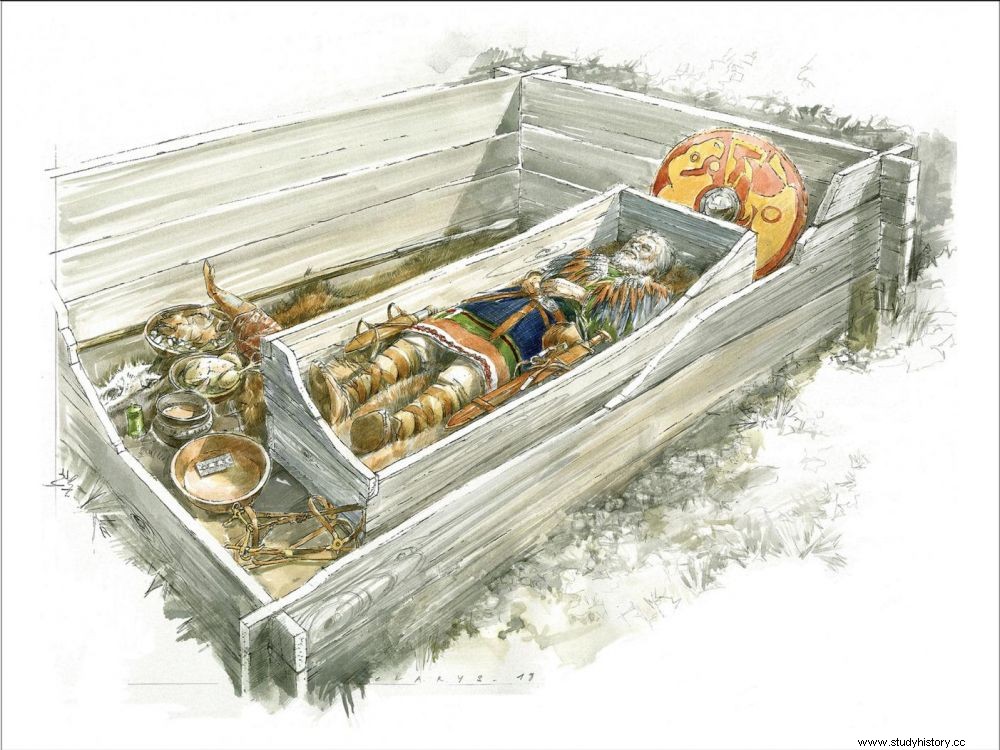While the reopening of tombs in the High Middle Ages in Europe has long been attributed to an act of looting, European researchers have just rehabilitated this practice.

Funerary spaces and practices in Alsace during the Merovingian and Carolingian periods.
From the 5th to the 8th century AD. J.-C., the visits of tombs are numerous in Western and Central Europe. Archaeologists accumulate testimonies and have long thought that they were traces of looting. A group of European researchers has studied this phenomenon. And their results, published in the journal Antiquity, show that theft was not the motive for these acts.
It is thanks to the study of more than a hundred necropolises, from the south of England to Transylvania, that the researchers were able to obtain this result. A significant proportion of graves are subject to these reopenings, with local variations. "In France, for example, on average 30% of graves are reopened, while it is 54% of graves in Bavaria, and 15% in the county of Kent in England" accurate to Sciences et Avenir Astrid Noterman, study author and researcher at Stockholm University.
These reopenings take place in particular between the end of the 6th century and the middle of the 7th century. They mainly concern so-called row necropolises. This type of necropolis, as its name suggests, is characterized by the arrangement of the tombs along rows. The dead are placed in wooden coffins, sometimes in large burial chambers. Weapons, jewelry and clothing accessories generally accompany the deceased. It is then these objects that seem to be the purpose of the reopenings of these tombs.
From the 5th to the 8th century AD. J.-C., the visits of tombs are numerous in Western and Central Europe. Archaeologists accumulate testimonies and have long thought that they were traces of looting. A group of European researchers has studied this phenomenon. And their findings, published in the journal Antiquity, show that theft was not the motive for these acts.
It is thanks to the study of more than a hundred necropolises, from the south of England to Transylvania, that the researchers were able to obtain this result. A significant proportion of graves are subject to these reopenings, with local variations. "In France, for example, on average 30% of graves are reopened, while it is 54% of graves in Bavaria, and 15% in the county of Kent in England" accurate to Sciences et Avenir Astrid Noterman, study author and researcher at Stockholm University.
These reopenings take place in particular between the end of the 6th century and the middle of the 7th century. They mainly concern so-called row necropolises. This type of necropolis, as its name suggests, is characterized by the arrangement of the tombs along rows. The dead are placed in wooden coffins, sometimes in large burial chambers. Weapons, jewelry and clothing accessories generally accompany the deceased. It is then these objects that seem to be the purpose of the reopenings of these tombs.
Removal of worthless items
When 19th century archaeologists first excavated these burials, they found them in a state of great disorder, with bones and objects displaced, sometimes fragmented. Which oriented their interpretation towards an act of looting. "It was by taking a fresh look at field data from recently excavated sites that we gradually realized that these acts were not as chaotic and greedy as we might have imagined" . Many precious objects are thus left in the graves. In a necropolis in Kent, for example, brooches were taken, but a necklace comprising 78 beads, accompanied by six silver and gold pendants were left.
Many of the recovered objects thus have no practical interest or economic value. The most frequently recovered items are brooches for women, and swords for men. Traces of oxidation left by these objects prove that they stayed in the tombs. But they are sometimes recovered when they were in poor condition. In some cases, only fragments of swords were removed.
A final element attests that it is not a question of looting for Astrid Noterman:"Tombs with substantial funerary furniture and perfectly visible in the landscape have been voluntarily not reopened". These are often the oldest tombs in the necropolises. These reopenings therefore only concern the most recent burials.
An act done by relatives
The reopenings are carried out close to the death of the person buried, often one or more generations apart. This chronology is established largely thanks to the evidence left by the decomposition of the bodies, but also of the coffins. In the majority of cases, the living come to proceed with these reopenings after decomposition of the flesh, but before the wood has disintegrated. It is thus probably the relatives of the deceased, who carried out these acts.
But what is the purpose of this gesture? "While we have been able to observe that these re-interventions are not acts guided by the greedy search for beautiful objects, defining precisely the causes at the origin of them is difficult" , replies Astrid Noterman. It is likely that the motivations leading to these reopenings are multiple. "These acts seem to correspond to a form of response from a community to a specific problem, adds the researcher. The latter may have been linked to a cult, a need to assert authority, the desire to maintain a link with the dead or the result of tensions between groups" . Far from being a disrespectful act, this one undoubtedly made it possible to establish a connection between the living and the deceased.
